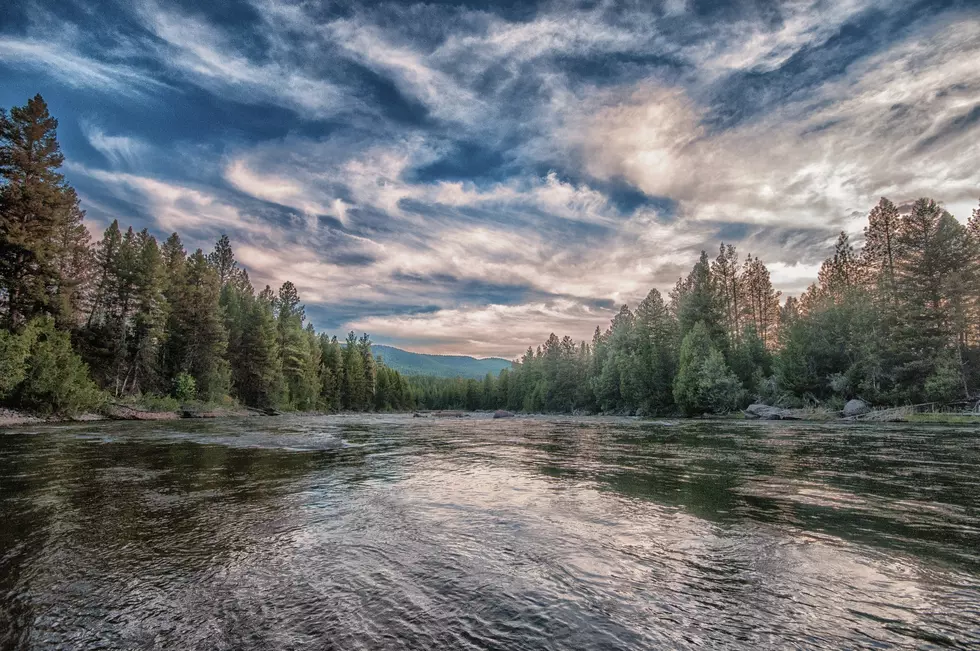
Pandemic results in more people, problems on Blackfoot River
A river may still run through it, but now it’s carrying a lot more people, based on Montana Fish, Wildlife & Parks monitoring of the Blackfoot River.
At Tuesday’s Blackfoot Corridor annual meeting in the Lubrecht Forest Conference Room, landowners, guides, anglers and river advocates met with representatives of FWP and the U.S. Bureau of Land Management to get updates on the recreational pressure on the Blackfoot River.
The results are cause for concern for those who cherish wild rivers and a wilderness experience.
Comparing the number of watercraft counted at four fishing access sites in the Blackfoot Recreational Corridor, user numbers jumped an average 37% between 2019 and 2020. The Whitaker Bridge access site saw the largest increase at 62% where one day saw 232 boats or tubes in the water.
“Use is clearly diversifying,” said FWP River Recreation Manager Christine Oschell. “The same thing is happening on the Bitterroot. In 2020, use bled into the weekdays way more than it ever was, volume was up, and we’re seeing less angling and more scenic trips. And that’s showing up in our 2021 in-person survey data.”
Even so, fishing outfitters and guides are adding to the crush. Prior to the 2010 plan being developed, guides completed an average of about 6,600 trips a season. After 2011, the number of trips surged to about 10,000 trips within about five years.
This summer saw many guides flocking to the Blackfoot River as other rivers around the region were put under fishing restrictions due to low flows and high water temperatures. Guided boats are now also using the river later into the fall, Oschell said. But the majority of the overall growth is from private boaters and floaters.
River managers expected that tubers, paddleboarders and non-angling floaters would take advantage of the more easily accessed sites closer to Missoula, such as Whitaker Bridge, Johnsrud and Angevine. Johnsrud was notorious for high-use issues before FWP changed management strategies in 2003.
For that reason, the 2010 Blackfoot Plan dedicated the lower stretches of river to high recreational use, knowing those sites would suffer the associated resource, parking and public safety issues that come along with more people.
The upper reaches of the river, on the other hand, were expected to provide more solitude and wilderness experience. So there, the plan provided for less accommodation for crowds of people.
However, the past two years have shown the public is no longer following the plan’s predictions. FWP has set up surveillance cameras near seven access sites that allow technicians to count not only the number of people on the water, but they can also see what kind of craft are passing by.
At the far end of the recreation corridor, use at Russell Gates has climbed fairly steadily since 2003 from about 6,000 total boats to 11,000 in 2019, followed by a spike of close to 14,000 in 2020.
While people with inner-tubes have always been common at Whitaker and Angevine access sites closer to Missoula, now they’re also being seen at Russell Gates and even a few farther upstream at River Junction. And more people got on the river during the week rather than just the weekends.
“Although the use at Russell Gates is really, really high, it’s mostly public use,” Oschell said.
Contributing to the growth, the BLM added four new float-in campsites this year to the four already existing the river. FWP River Ranger Cannon Colegrove said the new campsites haven’t been advertised but they’ve already gotten a lot of use.
People have to buy permits - $12 per party for residents - to camp on the river, which allows them to reserve campsites. Between 2014 and 2019, FWP sold between 40 and 80 permits a year. That number jumped to 144 in 2020 and skyrocketed to almost 500 this past summer, a one-year increase of 225%.
“This year was a big jump,” Colegrove said. “I think more people know about the program and the four new sites. There’s a lot of factors; the Smith (River) was low. But for whatever reason, this year was really high.”
To handle the overwhelming demand, Oschell said FWP would add the float-in campsites to the State Parks online reservation system, so people didn’t have to make reservations over the phone. Other campsite locations may also need to be found.
But one attendee warned against going too far.
“We’ve got to be aware of, when do we turn this from a wilderness experience… where does it cross the line into a waterpark?” the man said.
Coleman said human waste was a common problem at the campsites, because many people don’t carry waste containers as they should. One attendee said permit holders should be charged a fee if they don’t leave a site clean, and he suggested the motto: “If you leave a deposit, you lose your deposit.”
Others mentioned parking problems at the access sites, where sometimes vehicles have been blocked in as others have double- and triple-parked in front of them.
But Oschell said the resource issues haven’t gotten horrible yet.
“However, we also haven’t seen this amount of use for all that long,” Oschell said. “I also wonder what will happen when we have a good reservation system. I’ve had five phone calls already about reserving for next year for the 4th of July.
“I think we have good users who want to take care of the river, but there’s always going to be those exceptions. So I definitely want to keep that in mind before we rush to making it any bigger.”
Even the late Norman Maclean might admit it’s hard to be haunted by waters when they’re covered with floaters, inner-tubes and boaters.
Contact reporter Laura Lundquist at lundquist@missoulacurrent.com.
